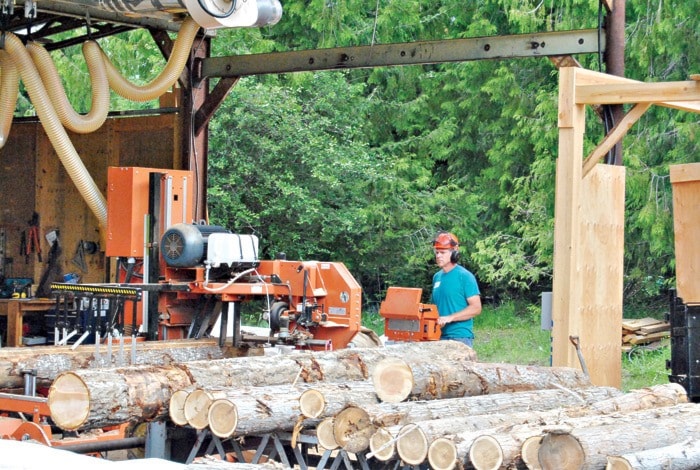It’s been more than decade in the making and a project that proves local initiative can go a long way towards positive action in the forest industry.
On Saturday, Harrop-Procter Forest Products celebrated its grand opening. Although the locally owned sawmill has been running for a couple months, they just got all the equipment up and running last week.
The company now has the ability to take logs from their original form to finished products without transferring them to another location.
The trees are harvested from a community forest: 11,000 hectares that run along the west arm of Kootenay Lake and wrap around the main body of the lake.
“Community forests are almost always adjacent to communities,” says Rami Rothkop, one of the founders of the community forest, “so that [citizens] have control over the land resources.”
Rothkop originally worked with the Western Wilderness Park campaign, which initially proposed to include the Harrop-Procter watershed. However, when the watershed was excluded, community members got together to work on a community forest proposal.
They sought out the Forest Stewardship Council, a voluntary third party certification, which conducts a stringent analysis of the milling operation on the ground, forest, and mill site. In 1999 Harrop-Procter became the first and only community forest to obtain certification in BC, enabling the mill to market products with an “eco” label.
“It’s kind of like the equivalent of organic in wood,” says Rothkop. “You know you’re buying something that comes from a good source.”
Harrop-Procter Forest Products harvests a wide range of trees, such as Douglas fir, larch, and cedar, with a full line of flooring, decking, siding, and paneling. Their main customers are local residents, with 80 per cent of buyers coming from around the area. However, they also sell to other customers looking for the Forest Stewardship Council logo.
The mill has further been working with Joern Wingender, the owner of a local timber framing company, who designs homes to fit the profile of the forest and available lumber. He focuses on locally grown, harvested, and consumed products to sustain the resources within our environment.
“The idea of the building style emphasizes the least amount of processing as possible,” explains Wingender. “It’s like a carrot: you can pull it out of the ground, clean it off, and eat it. That’s kind of my approach to building.”
Rothkop explains that as the mill expands, he would like to work in partnership with other small businesses and mills that share the same philosophy of a sustainable environment.
The mill currently employs three to seven people seasonally, depending on what they are doing at the time. The employees work hard to create high quality products, in a sustainable environmentally friendly way, he says.
“I’ve been learning as I go,” says Rothkop, “to take making lumber… a step further to value-added, quality products.”
